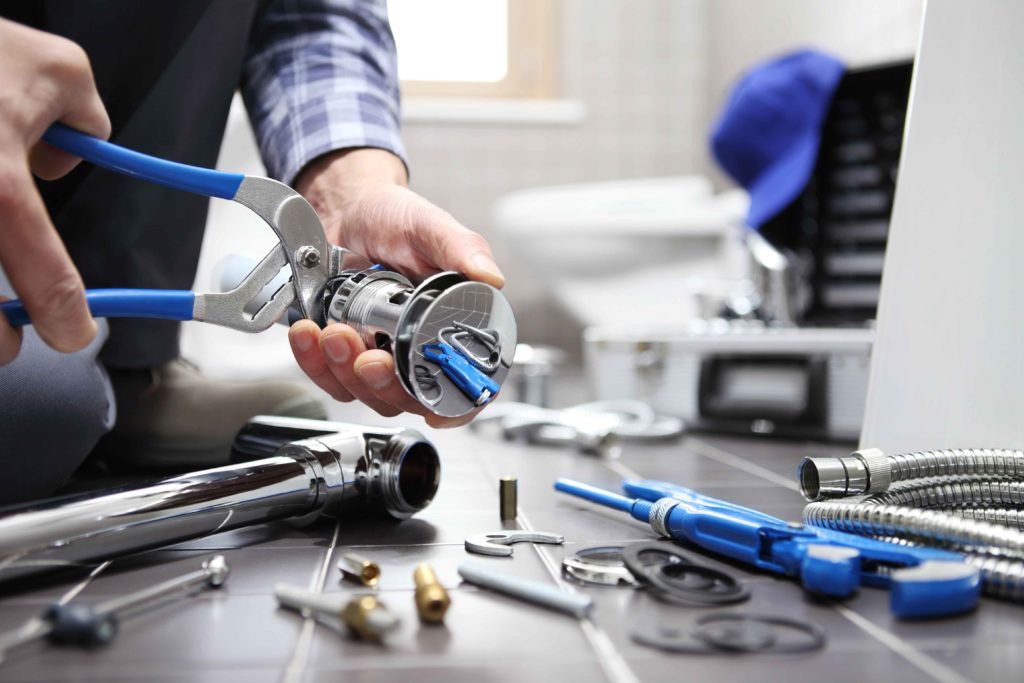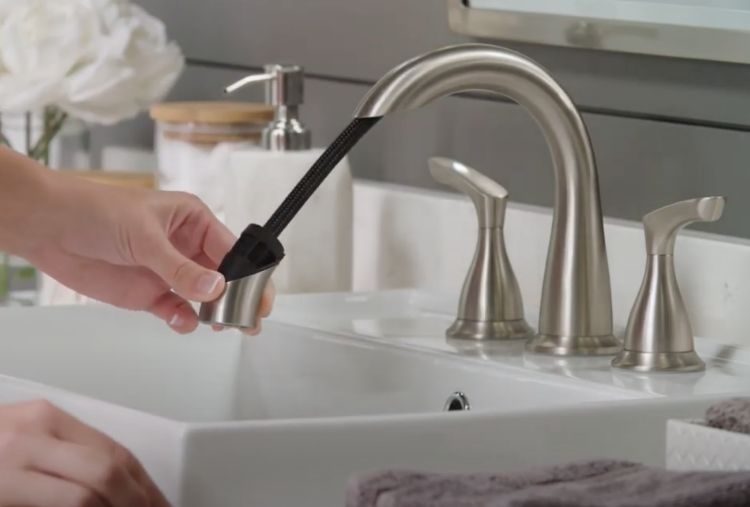Understanding the Relevance of Addressing a Broken Faucet
Understanding the Relevance of Addressing a Broken Faucet
Blog Article
We have discovered the article involving Why Are My Faucets Dripping (And Can I Fix It Myself)? directly below on the internet and decided it made sense to discuss it with you here.

Dripping taps might seem like a small hassle, yet their influence surpasses just the aggravation of the audio. From drainage to incurring unnecessary economic prices and wellness dangers, disregarding a trickling tap can cause numerous consequences. In this article, we'll explore why it's crucial to address this common home issue without delay and properly.
Wastefulness of Water
Environmental Impact
Leaking taps add substantially to water wastage. According to the Environmental Protection Agency (EPA), a single tap trickling at one drip per secondly can throw away greater than 3,000 gallons of water each year. This not just pressures water sources yet also influences communities and wild animals dependent on them.
Financial Prices
Increased Water Bills
Past the environmental impact, dripping faucets can blow up water expenses significantly. The collected wastage over time translates right into higher energy expenditures, which could have been stayed clear of with prompt repairs.
Prospective Building Damage
In addition, prolonged dripping can result in damage to components and surface areas bordering the faucet. Water accumulation can trigger discoloration, corrosion, and even structural problems if left ignored, leading to extra repair work prices.
Wellness Problems
Mold And Mildew and Mildew Growth
The constant presence of dampness from a trickling tap creates an excellent environment for mold and mold development. These fungis not only endanger indoor air high quality yet additionally present health and wellness dangers, particularly for individuals with respiratory system problems or allergies.
Waterborne Diseases
Stationary water in dripping faucets can come to be a breeding place for bacteria and other pathogens, raising the danger of waterborne diseases. Impurities such as Legionella bacteria thrive in stationary water, possibly leading to significant illnesses when ingested or breathed in.
Do it yourself vs. Expert Repair work
Advantages and disadvantages of Do It Yourself Fixing
While some may attempt to take care of a dripping tap themselves, DIY fixings include their own collection of obstacles. Without appropriate expertise and devices, do it yourself attempts can aggravate the problem or cause incomplete fixings, prolonging the trouble.
Benefits of Working With a Professional Plumber
Employing a specialist plumber guarantees that the underlying source of the trickling tap is addressed successfully. Plumbing technicians have the know-how and tools to identify and fix tap issues efficiently, saving time and minimizing the danger of more damage.
Step-by-Step Overview to Fixing a Dripping Faucet
Tools Needed
Before attempting to take care of a leaking faucet, gather the necessary devices, consisting of an adjustable wrench, screwdrivers, replacement components (such as washing machines or cartridges), and plumber's tape.
Typical Faucet Issues and Their Solutions
Identify the sort of faucet and the specific issue creating the drip. Typical problems consist of worn-out washing machines, corroded shutoff seats, or defective O-rings. Refer to maker instructions or on-line tutorials for step-by-step advice on repair services.
Preventive Measures
Routine Upkeep Tips
To stop dripping faucets, do regular maintenance such as cleansing aerators, examining for leakages, and changing worn-out parts promptly. Additionally, consider mounting water-saving tools or upgrading to more effective fixtures.
Relevance of Prompt Fixes
Resolving leaking taps as soon as they're seen avoids additional water wastefulness and possible damage, eventually conserving both water and cash in the long run.
Effect On Residential Or Commercial Property Value
Understanding of Well-Maintained Residential Property
Keeping a building in good condition, including resolving maintenance concerns like dripping faucets, boosts its viewed worth and value amongst prospective customers or renters.
Impact on Resale Value
Residences with well-kept plumbing components, consisting of faucets, command higher resale values in the property market. Attending to trickling taps can add to a favorable perception during residential property inspections and negotiations.
Ecological Responsibility
Private Payment to Preservation
Taking duty for dealing with leaking taps lines up with more comprehensive initiatives toward water preservation and environmental sustainability. Every individual's actions jointly make a substantial influence on protecting valuable resources.
Sustainable Living Practices
By prioritizing prompt fixings and taking on water-saving habits, individuals add to sustainable living methods that profit both existing and future generations.
Verdict
Addressing a dripping faucet surpasses simple benefit; it's a crucial step toward conserving water, lowering monetary costs, and securing health and wellness and residential property. Whether through do it yourself repairs or expert aid, acting to deal with dripping faucets is a small yet impactful method to advertise responsible stewardship of resources and add to a much healthier, extra sustainable future.
How to Fix a Dripping or Leaky Faucet
A leaking faucet is one of the most common problems that homeowners encounter, but it being commonplace doesn’t make it any less annoying. The constant drip drip drip of a leaking bathtub faucet, showerhead, or sink tap can disturb your home’s serenity. Left neglected, a dripping faucet can also result in higher water bills and discoloration or mold growth in your sink or plumbing fixtures.
Fortunately, you don’t have to be a trained plumber to know how to stop a dripping faucet. With some basic tools, replacement parts, and a little patience, leaky faucet repair is a breeze. In this article, we’ll explain what causes dripping faucets and how you can fix them.
What Causes a Leaking Faucet?
Kitchen and bathroom faucets come in all manner of designs, but most involve some combination of valves, O-rings, seals, and washers. The O-ring is usually the weakest link, but any one of these pieces can wear down over time. Heat, moisture, temperature fluctuations, minerals, mold, and movement can contribute to warping and corrosion, breaking the watertight seal. This just comes with the territory of being a homeowner. Everything is always subject to wear and tear, and some component parts of your appliances and fixtures need to be replaced on occasion. At least replacement O-rings are cheap!
More rarely, dripping faucets can be a symptom of excessively high water pressure. Were this the case in your home, you would probably notice that the leak is not isolated to one faucet. Water pressure issues are harder to resolve on your own. We recommend contacting a professional plumber if you suspect your water pressure is too high.
How to Fix a Dripping Faucet
Pipe wrench or monkey wrench Allen wrench set Screwdrivers Old towel or rag Shut off the water.
Before you do anything, you need to turn off the water to keep from drenching your kitchen or bathroom. You should find a valve under the sink and against the wall. Once you’ve turned this valve, try turning the faucet on to confirm that the water source has been cut off.
If you can’t locate your local valve for the faucet you’re working on, you can always shut off the water to the house at the main valve. Of course, this will prohibit anyone from using the sinks, showers, or toilets while you’re working on the faucet that’s giving you trouble.
Plug or block the drain.
You’ll be disassembling the faucet and removing some small bits of hardware. Plug the drain with a stopper or rag to avoid the possibility of a small screw falling into your P-trap.
Take apart the faucet assembly.
There are several varieties of kitchen and bathroom faucets, each with its own manner of assembly. For detailed instructions on how to disassemble your faucet, you can refer to the fixture’s manual or contact the manufacturer. If you know whether you have a ball, disc, cartridge, or compression faucet, you can find detailed schematics online.
In general, you need to begin by removing the faucet handles. You might notice a small screw that you’ll need to remove with a screwdriver or Allen wrench. If you don’t see any visible securing hardware, it’s likely hidden under a decorative cap that can be unscrewed or popped off with flathead screwdriver.
Remove each piece methodically, consulting a schematic when necessary. Take notes or arrange the pieces in such a way to make it easier to correctly reassemble the faucet later.
Remove the cartridge.
Once you’ve removed the handles and securing hardware, you should be able to remove the valve cartridge or stem. Some cartridges will slide right out. Other faucet models will require you to loosen a nut with a pipe wrench before you can remove the valve stem.
Examine the exposed hardware.
With the cartridge or stem removed, inspect the component parts. Check the rubber O-rings for wear and tear. Also examine the seat washer for corrosion or other damage. These pieces are usually the responsible parties for a dripping faucet, but it’s worth inspecting the other component parts while you have the faucet disassembled.
Find replacement parts.
Once you’ve identified which faucet component has failed, find an identical replacement. Your local hardware store should have O-rings, seat washers, and other standard components in stock. If you have a luxury or uncommon faucet, you may have to contact the manufacturer for a replacement part.
It’s a good idea to take your old parts with you to the hardware store so you can compare them with the store’s inventory and be sure you’re purchasing the correct replacement.
Reassemble the faucet.
With your new parts in hand, reconstruct the faucet and handles. Don’t be tempted to overtighten screws or nuts. You might think this could create a better seal, but it can instead damage or bend a delicate part of the assembly and create a new problem for you.
Turn on the water and test the faucet.
The only thing left to do is test your work. Unplug the sink, turn the water back on, and try the faucet. Congratulate yourself on a job well done!
https://www.libertyhomeguard.com/how-to-fix-a-dripping-or-leaky-faucet/

Do you really like more info about Water Dripping from Faucet: Why and How to Fix? Try leaving a review down below. We'd be happy to listen to your responses about this blog entry. We are looking forward to see you back again soon. Are you aware of somebody else who is involved in the topic? Why not promote it. Thanks for taking the time to read it.
Report this page